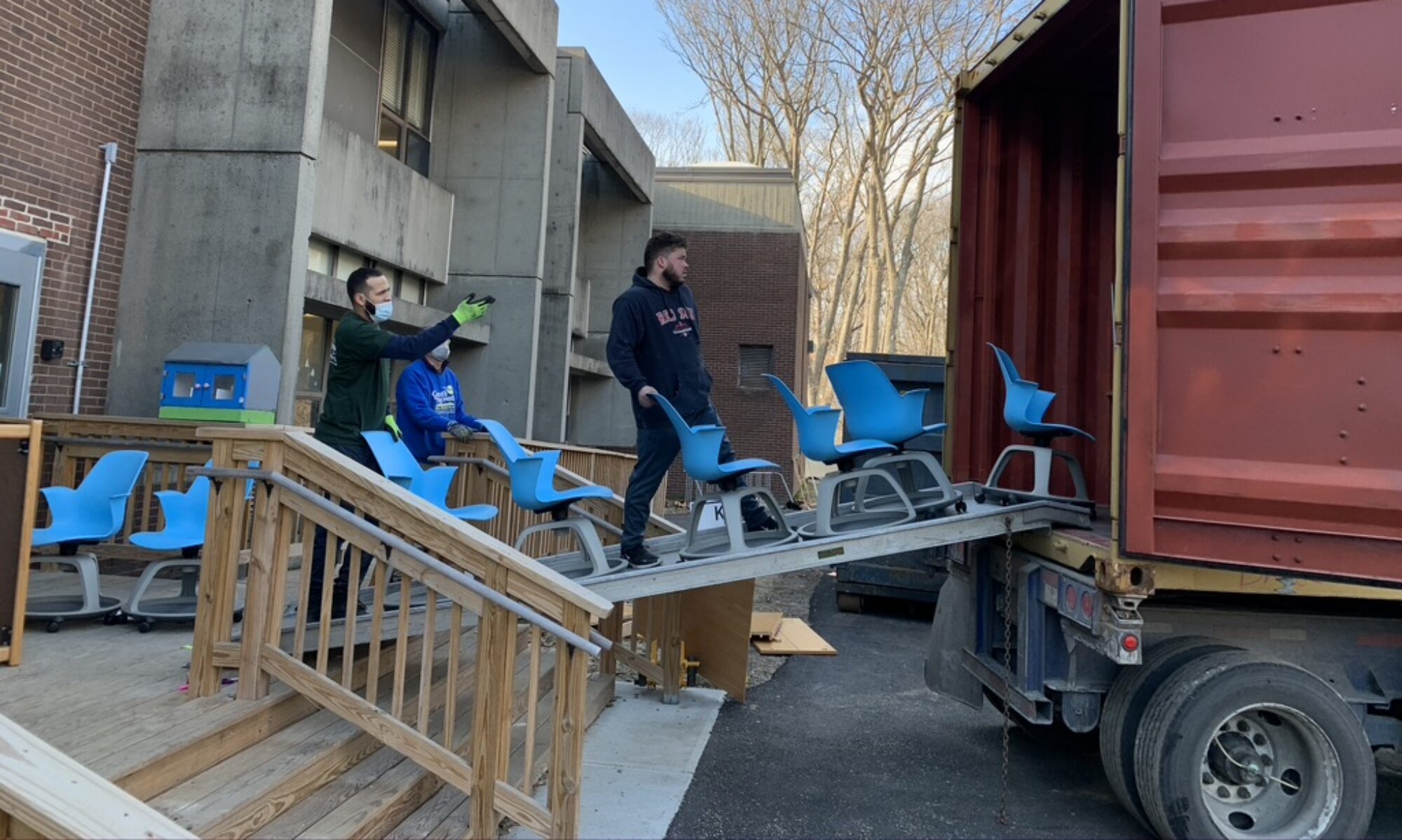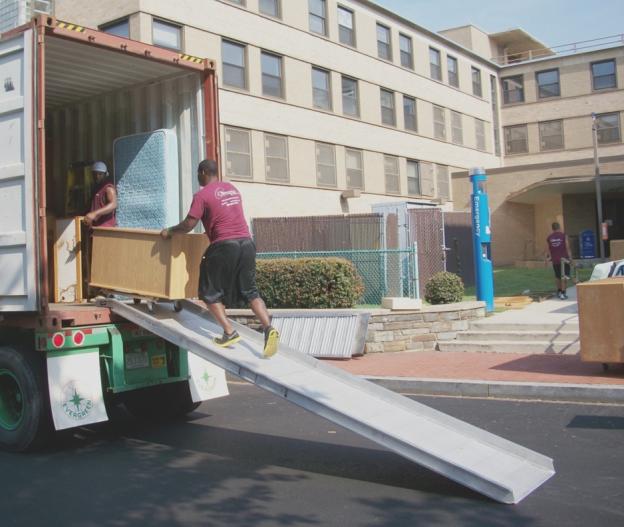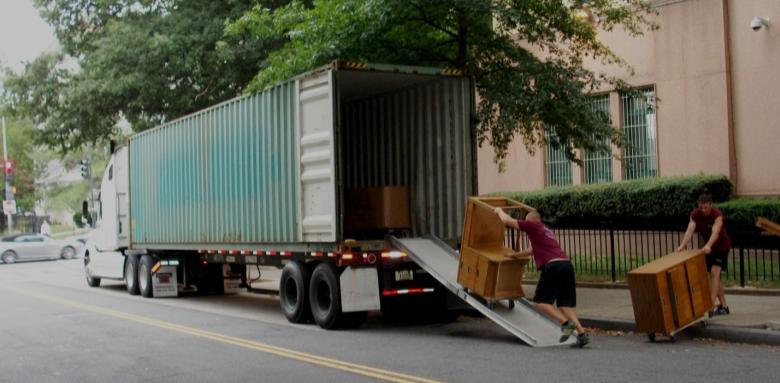Situation: Howard University (Washington DC) planned the summer replacement of of dorm furniture and mattresses from rooms in eight different dormitories. Scheduled between summer classes and fall student move-in, the project had to be completed in four days
Material Composition: Dormitory furniture including beds, desks, chairs, bookcases, bureaus, mattresses.
Quantity: 315 partial or complete dorm sets, plus ~700 additional mattresses. Miscellaneous items of residential and other furniture.
Setting: Eight separate buildings including five dormitories on the Howard campus plus three off-campus dorms on public streets.
Click here for a downloadable PDF of this case study.
OVERVIEW
Howard University requested the removal of 315 sets of dormitory furniture from a total of approximately 200 rooms scattered among eight different dormitories. Separately, Howard requested removal of some 700 mattresses from a different set of rooms. In order to empty, refresh, and re-fill the rooms with new furnishings, Howard had only a four-day window to complete the project.
With an 11-man crew, IRN and Olympia Moving filled nine trailers with the dorm furnishings, which were sent through IRN partner Food for the Poor to recipients in Guatemala and El Salvador. An additional trailer of dorm furnishings was provided to a school for disadvantaged children in Rhode Island. Three trailers containing 681 mattresses were provided to villages in Nicaragua.
SETTING
Howard has a compact urban campus surrounded by residential and commercial neighborhoods. Only five of the eight dormitories in the project were located on campus. Two were on residential streets several blocks away, and one was located on commercial streets about a mile from the main campus. No two dorms shared a common access point.
COMPOSITION
CRITICAL ISSUES
Difficult Location: Howard’s location presented many challenges. Drivers got lost and needed to be guided to the campus. Tractor trailers had to be moved through narrow, crowded city streets. Parking had to be reserved and streets had to be blocked off so that trailers could be loaded. DC police had to be appeased when trailers were blocking their streets.
Tight Schedule: Howard imposed a four-day window to complete the project. The start was dictated by the end of summer classes. Completion faced a hammer deadline set by students moving in for the fall semester.
Complex Site & Logistics: Because furnishings were scattered in eight buildings, trailers were received at a central location and then directed to specific load points. Only five of thirteen trailers were loaded from a single building. Eight were loaded from two or (in two cases) three different buildings. Balancing loads to fill trailers quickly and efficiently was a major challenge. Additionally, partly filled trailers had to be secured and moved through DC streets to complete their loads.
Coordinating with the Client: Each building had its own supervisory team; there was no single list of rooms to be emptied or furniture removed. IRN had to coordinate with each of the individual residential supervisors, who were simultaneously juggling many other tasks associated with building touch-up and students moving in.
Tough Access, Long Carries: The rooms to be emptied were scattered within the dorms. There were long carries within each building; only one building had more than a single elevator, and three buildings had no elevators. Some large furnishings did not fit in the elevators and had to be hand-carried to street level. Not one building had a loading dock, and several had long outside carries to trailers.
Assigning the Crew: With multiple buildings and access points, and trailers being loaded simultaneously, it was necessary to divide and reconfigure the moving crew every day, sometimes several times a day, to load efficiently.
Managing Trailers: Because of shipping destinations and schedules, the trailers for this project were routed out of the port of New York, and several were seriously delayed en route to the project. This necessitated ad hoc changes in the moving and loading schedule, staging furniture in halls and common areas when trailers didn’t arrive on time, and further reassignment of crews.
IMPLEMENTATION
From its inception, this was anything but a simple project. One key to success was the flexibility and incredibly hard work put in by Olympia’s moving crew, who were reassigned and moved, reassigned and moved several times. A second key to success was the effective coordination between IRN’s onsite manager and office logistics staff. The product of hundreds of projects spanning more than a decade, this allowed the many difficulties encountered on the project to be addressed and handled with no impact on the project’s successful and on-time conclusion.
DESTINATION
Nine trailers of dorm furnishings were sent to Food for the Poor recipients in Guatemala and El Salvador. One trailer of dorm furnishings was provided to a school for disadvantaged children in Rhode Island. Three trailers with nearly 700 mattresses were provided through Food for the Poor to communities in Nicaragua.



